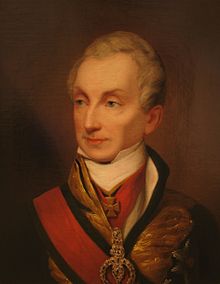Grown Up
The official residency of the Imperial court became Hofburg palace, a fortress complex built in the end of the 13th century constantly adapted to the needs of each Habsburg ruler. The oldest part of the Hofburg called Schweizertrakt (Swiss wing) after the Swiss guards who served at the palace watch, was revamped in Renaissance style in 1552.

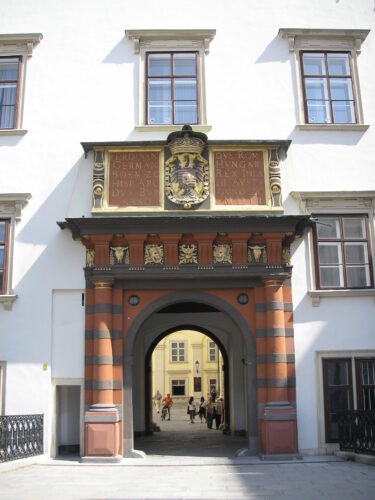
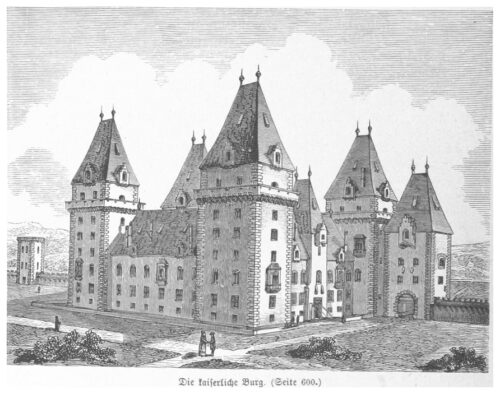
16th century was a time of great religious unrest with protestant faith quickly gaining supporters in Vienna as well as the rest of Europe. Fervent supporters of the Catholic faith, the Habsburg rulers led the counter-reformation movement, with the Jesuits being brought in the city of Vienna by 1551 & soon gaining a large influence in the Imperial court. The Akademisches Gymnasium established in 1553 would be their main channel of communication with the younger generations and the oldest secondary school in Vienna’s history.
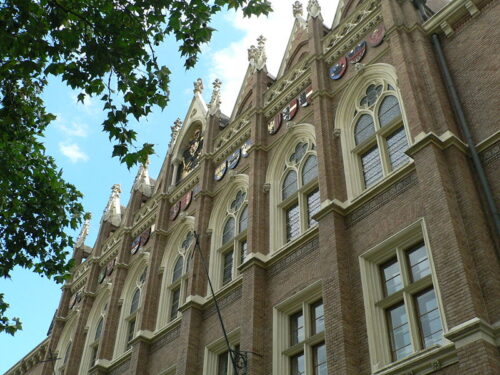
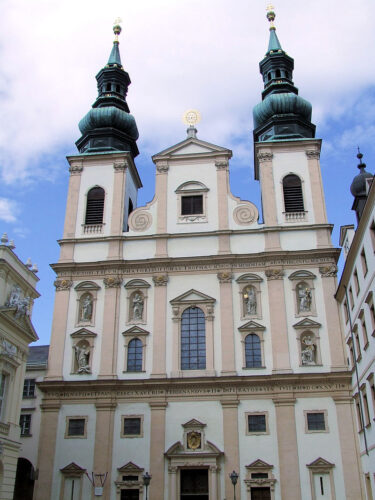
The re-catholicization of Vienna was entrusted by the Habsburg ruler Rudolph II in the hands of the Viennese Melchior Klesl who although born by Lutheran Protestant parents was converted and ordained to Catholicism in 1577. He became the main agent of Roman Catholicism in Vienna after his appointment as Bishop of the city in 1598.
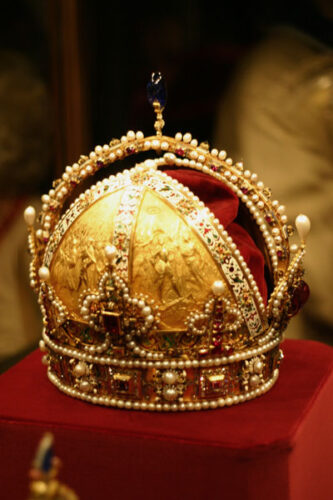
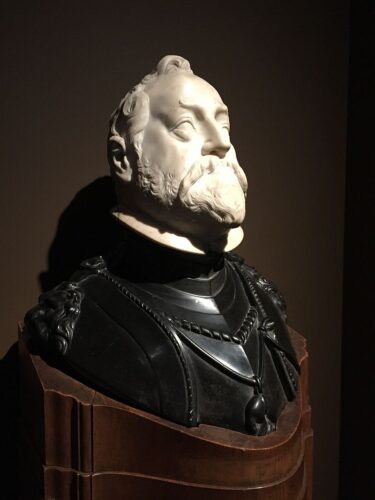
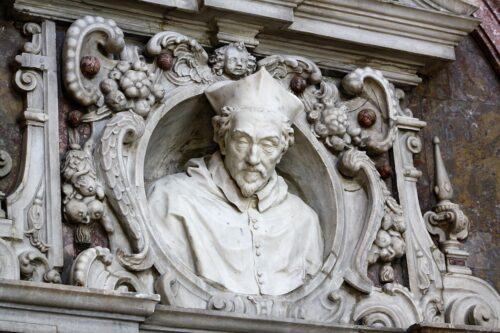
In a period when Vienna was starting to acquire some of the awe inspiring elements of an Imperial capital with the construction of the first Palace of Schönbrunn and the opening of spectacular Opera plays like Il pomo d’oro by Antonio Cesti (1668), a twist of fate would force the Viennese to take a hard landing. The God pestilence, the Black Death hit the flagship city of Anti-Reformation with all of its might. The plague hit Vienna several times in the first years of the 1680’s wiping out more than half of its population (more than 73.000 people).
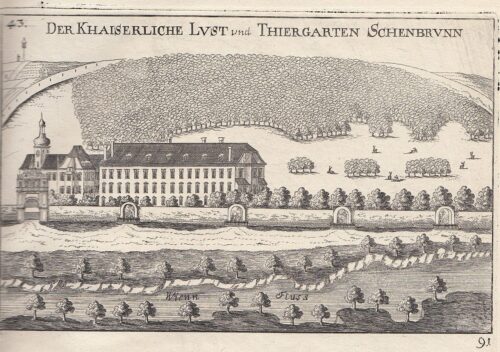
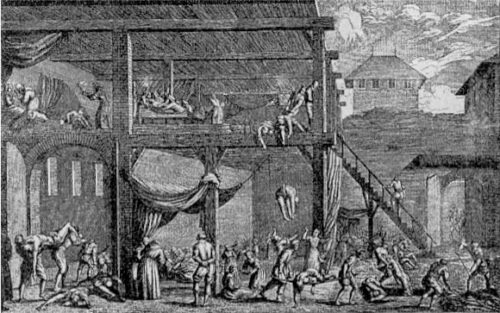
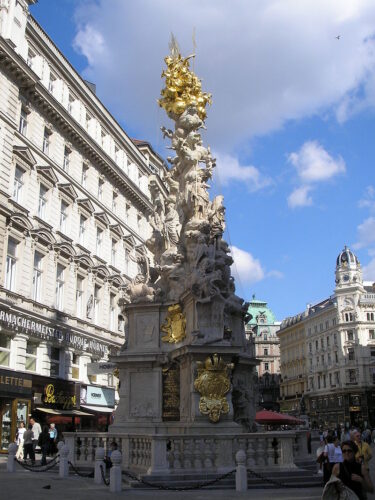
The inner conflicts of Christianity would be set aside once and for all in January 1682, when another Ottoman army of about 150.000 men started to move towards Vienna again. War was declared on 6 August 1682. The invasion however especially of that scale was not something that could be materialized at a break neck speed in those times. A time gap of nearly 15 months between the declaration of war and the invasion gave Vienna the opportunity to properly prepare its defense and the Holy Roman Empire to form new alliances with the Kingdom of Poland, the Papal States and the Republic of Venice in order to face the attack.
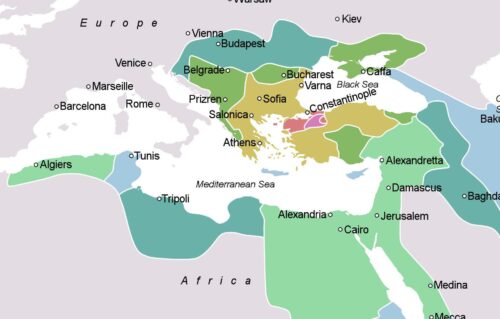
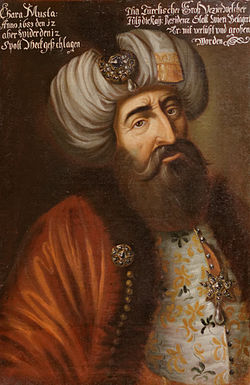
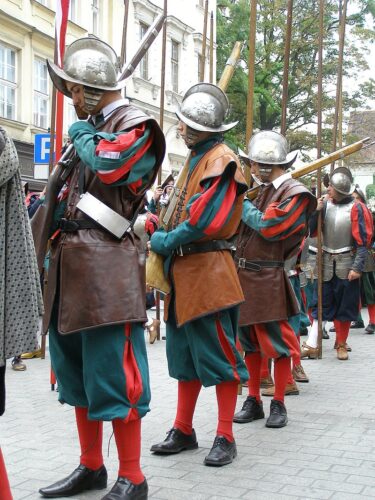
The Turkish threat had turned Vienna into a city fortress after the first siege. Eleven bastions spread across the city walls stood above the surrounding moat while a broad strip of land around the city had been turned into a glacis, stripped of any buildings in order for the defenders to fire unobstructed.

Despite the provisions the numbers of the enemy were simply overwhelming. 30,000 Crimean Tatars were the first enemies to arrive outside Vienna on the first week of July, 1683. Emperor Leopold I with his court and most of the Viennese civilians (about 60.000 of them) fled Vienna for Passau and other destinations to the west.
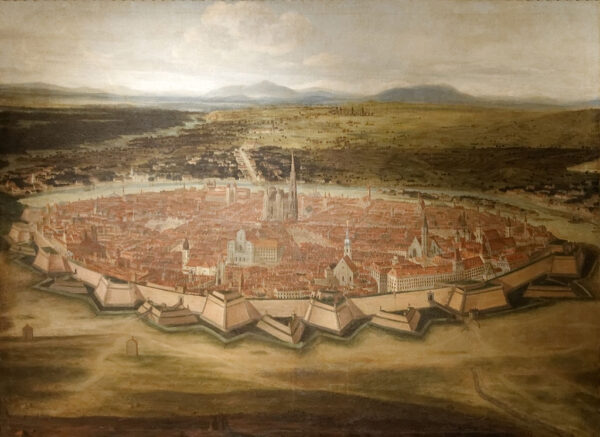
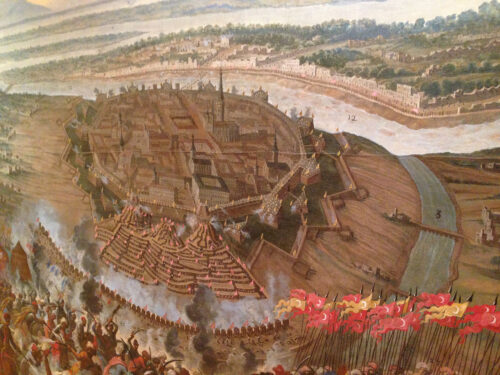
About 15.000 strong were left behind to defend the city against a humongous army of nearly 150.000. The fierce clash of the two cannon batteries could not tilt the scales especially since the defenders had twice as much firing power than the attackers who relied mostly on mining tunnels, dug under the foundations of the thick defensive walls.

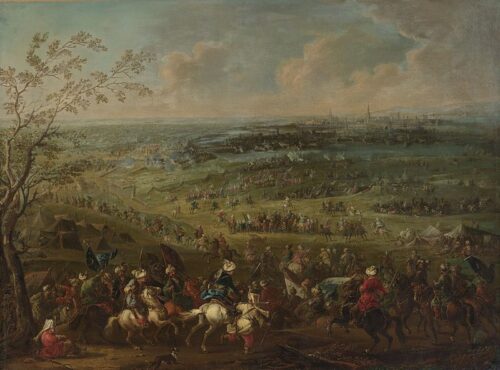
For two months the city and its defenders were completely cut off from the rest of the world. Starvation had already turned a desperate situation into unbearable for the besieged who mustered their courage to mend the increasing amount of damages and opening gaps created in the city wall by the explosions in the mining tunnels and the constant bombardment by the Turkish cannons.
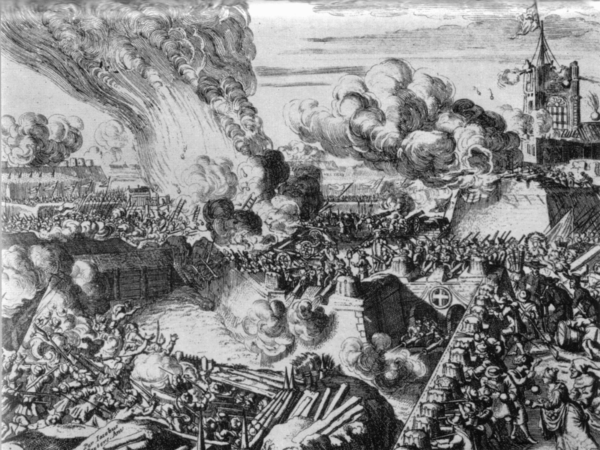
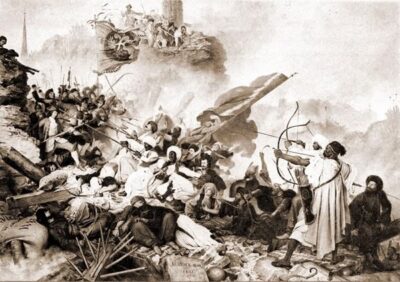
In early September, just when the Viennese prepared for a last-ditch defense behind the largest gap of the crumbled city walls, an alliance of Christian armies led by Jan III Sobieski, the King of Poland and Grand Duke of Lithuania arrived at the Gates of Vienna.
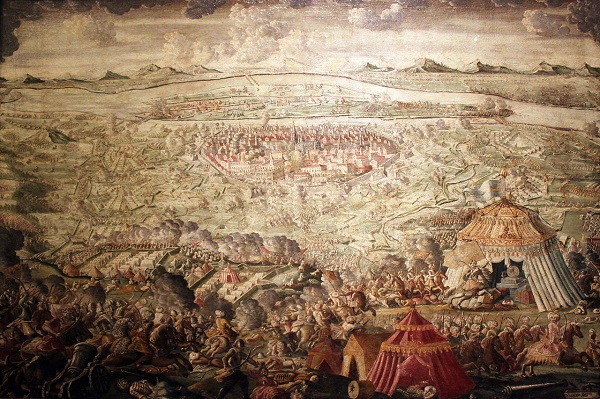
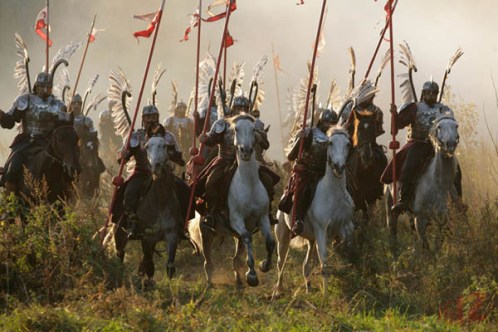
On the early morning of September 12th 1683 the battle started with the Ottomans venturing a surprise attack. Within a few hours the outnumbered Christian army (about 70.000 against 140.000 Ottomans) managed to outflank the Turkish troops and inflict the final blow with the help of the formidable Polish hussars who brought panic in the enemy lines with their otherworldly appearance and artificial angel wings. The victory at Vienna marked the turning point in the 300-year old Ottoman-Habsburg struggle, the historic end of the Ottoman expansion in Europe & finally the re-establishment of the political hegemony of the Habsburg dynasty in the Holy Roman Empire & Central Europe.


Charles II the last Habsburg ruler of Spain died in 1700 without leaving an heir, triggering the War of the Spanish Succession that started shortly after his death. The war between the Holy Roman Empire still ruled by the Habsburg Leopold I and Great Britain on one side and France, Naples & Sicily on the other lasted for almost 14 years. In 1703 Leopold I transferred his claim on the Spanish monarchy to his second son, Charles VI. Upon his death in 1705 (aged 64) he was buried in the Imperial Crypt beneath the Capuchin Church and Monastery, near Hofburg castle, the official burial place for members of the House of Habsburg since 1633. Leopold I’s eldest son, Joseph I, took on the helm of the Empire.
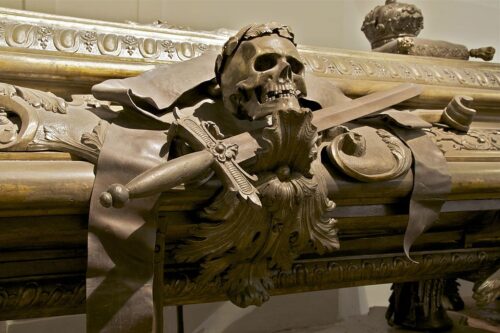
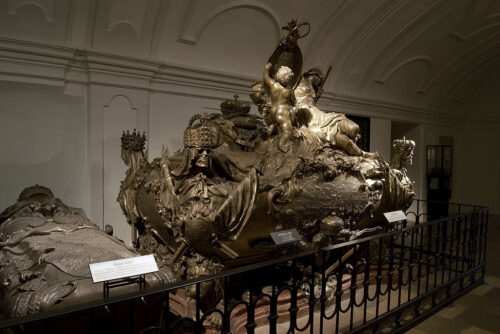
During the short reign of Joseph I (Died during a smallpox epidemic in 1711) and then of his younger brother Charles VI (1711 to 1740), two esteemed Viennese architects managed to turn the city into a Baroque Elysium. Palais Auersperg, Stadtpalais Liechtenstein, Palais Schwarzenberg, Upper Belvedere and the magnificent Karlskirche, created after the end of another plague epidemic in 1713 were all built by Johann Bernhard Fischer von Erlach and Johann Lukas von Hildebrandt during the first two decades of 1700’s.

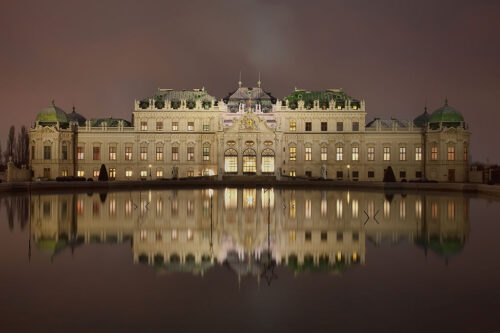
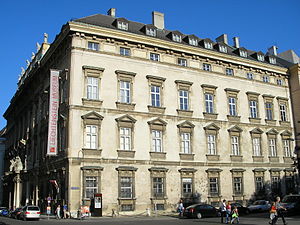
By 1713 Charles VI‘s marriage with Elisabeth Christine of Brunswick, a Princess of exceptional beauty, had produced only two daughters that had survived to adulthood. That led to the Pragmatic Sanction of 1713 which ensured that his daughter Maria Theresa would follow him in the line of succession. Freed from military threats the city evolved under Charles VI & his daughter, Maria Theresa into a true Mecca of the arts. The Emperor of Music Charles VI found escape from the anxieties of his Imperial obligations and the increasing worries concerning his succession in the harmonies of music. He devoted much of his spare time in attending operas and spent much of his funds on expanding the musical venues in Vienna, building upon the foundations set by his father Leopold I. Vienna’s reputation as the most prestigious music capital of Europe would attract all the musical talents of the Empire as well as Italy, paving the way for the musical wonders of Joseph Haydn, Mozart and Beethoven who all flourished during the second half of the 18th & the beginning of the 19th century.

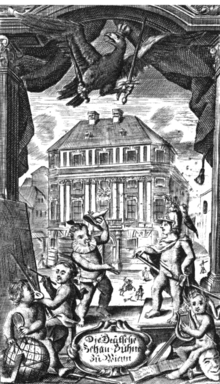

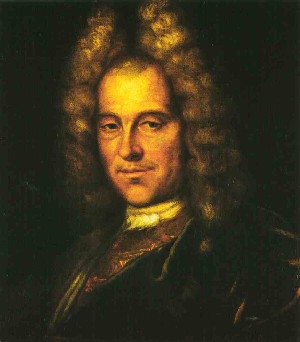
By the 1790’s the city’s population had doubled, reaching almost 200.000 people as a result of its early industrialization & the construction of factories with the first one established in Leopoldstadt, the city’s second district. Modern reforms were implemented in the economy, civil service & education while the city’s sanitation improved considerably. The suburbs had been turned into giant baroque gardens and organised parks like Prater or Tiergarten Schönbrunn (zoo) that improved the quality of life and air in the capital.
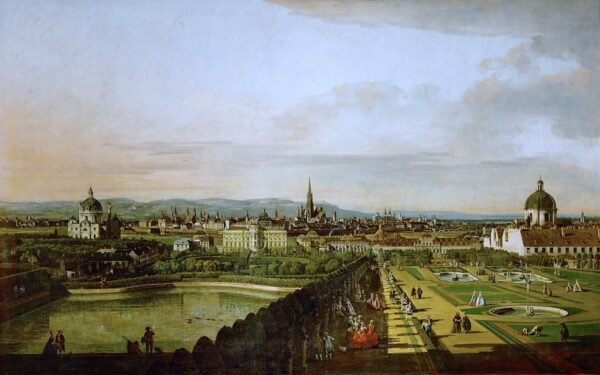
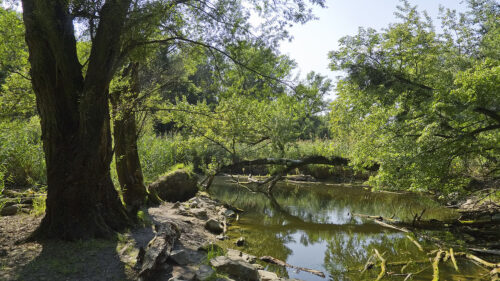
The first organised Christmas Market started operating in the central square of the aristocratic neighborhood of Freyung in 1772 while a few years later, on November of 1780, a forty year old reign, that of Maria Theresa would come to a closure, with her eldest son Joseph II ascending on the throne. Wolfgang Amadeus Mozart would attend the celebrations as a guest of his new employer, the Archbishop of Vienna, Hieronymus von Colloredo. He later decided to settle in Vienna as a freelance performer and composer.

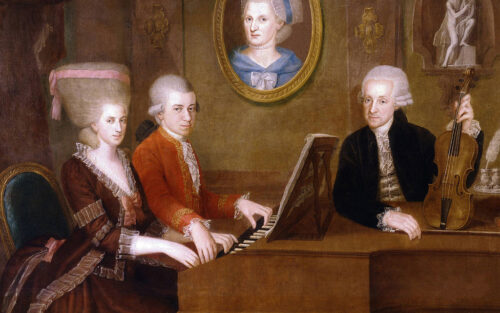
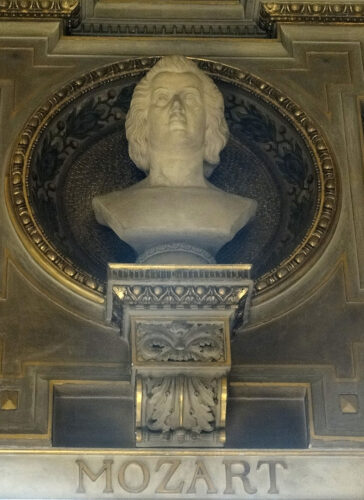
Mozart’s star had already started to shine with his comic opera Le nozze di Figaro (The Marriage of Figaro) premiering at the Burgtheater in Vienna on May 1786 with a huge success. In the same time another exceptional talent, a teenager named Ludwig van Beethoven, traveled to Vienna from his hometown (Bonn) in the hope of studying with Mozart (March of 1787). After his second premiere of Don Giovanni (October 1787), Mozart was appointed as chamber composer of the court by Joseph II, which actually meant he had to compose for the annual balls in the Redoutensaal for a salary that barely covered his life’s expenses and was in essence an effort by the Emperor to keep the composer from leaving Vienna.
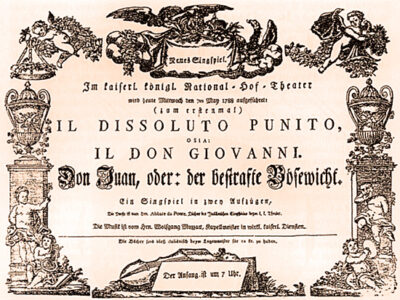
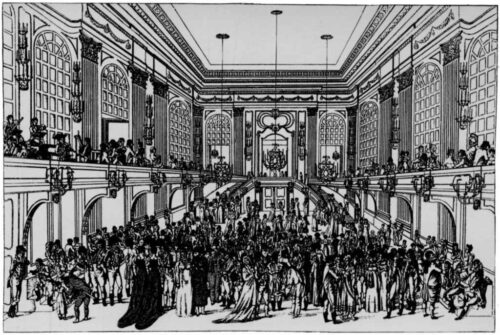
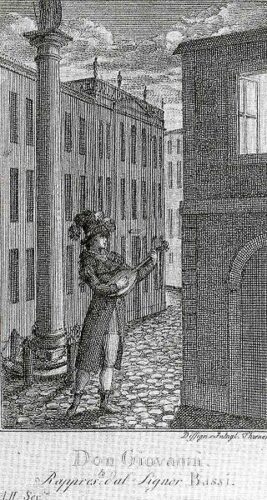
According to some biographers the young Beethoven met with Mozart in the Spring of 1787 and he even played for him at his request with the latter saying emphatically, “Mark that young man; he will make himself a name in the world!”. Aside from the historic accuracy of the quote, there seems to be little doubt about the fact that the two grand masters of music met in Vienna and that Mozart operated as an inspirational figure for young Beethoven, especially after 1789, when the young musician started playing viola in the court orchestra which performed many of Mozart’s operas at that time.
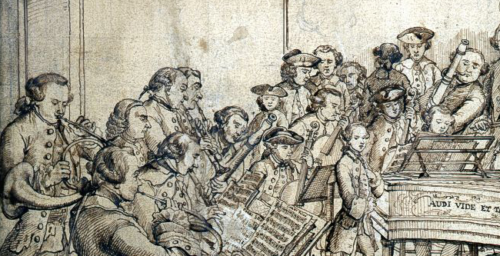
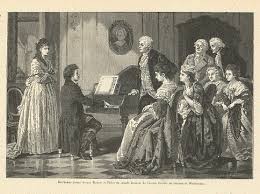
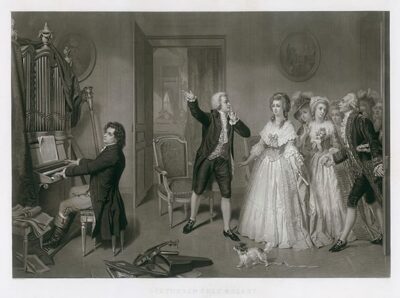
Wolfgang Amadeus Mozart died in December of 1791, at the young age of 35, after a rush of high fever that has not yet been diagnosed with certainty. His illness came at a time of great productivity, which the great composer struggled to keep until his last day. He was buried in a common grave, in accordance with contemporary Viennese custom, at the St. Marx Cemetery outside the city. His death created an unprecedented wave of enthusiasm for his work with the memorial services and concerts reflecting the great appreciation of the Viennese public for the composer.
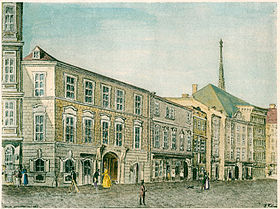

Beethoven, who had moved to his hometown Bonn, eventually returned to Vienna one year after the death of his idol, in 1792. This time Beethoven was determined to do exactly what Mozart had predicted when he had first heard him play. He became closely acquainted with some of Mozart’s associates and continued his studies under Haydn‘s (Mozart’s mentor) direction. In March 1795 Beethoven gave his first public concert in Vienna. Between 1798 and 1800 he composed his first two symphonies. In April of 1800 he staged an extensive program of music with all of his works and works of Haydn and Mozart in the Burgtheater. By 1803 he was widely regarded as the most important composer of his generation and on April of that year he was appointed in the Theater an der Wien as a resident composer.
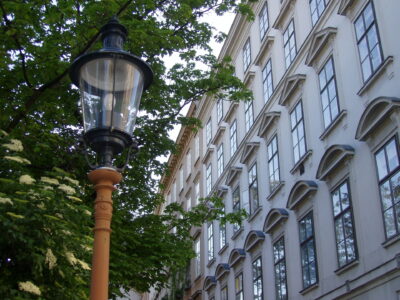
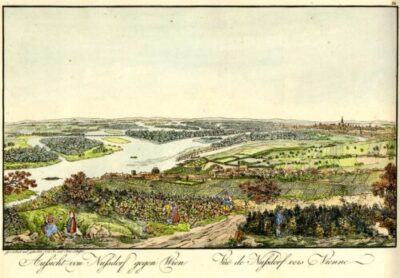
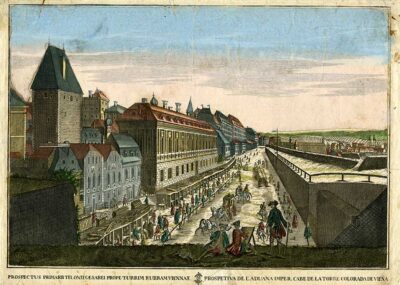
In March 1795 Beethoven gave his first public concert in Vienna. Between 1798 and 1800 he composed his first two symphonies. In April of 1800 he staged an extensive program of music with all of his works and works of Haydn and Mozart in the Burgtheater. By 1803 he was regarded as the most important composer of his generation and in April of that year he was appointed in the Theater an der Wien as a resident composer.
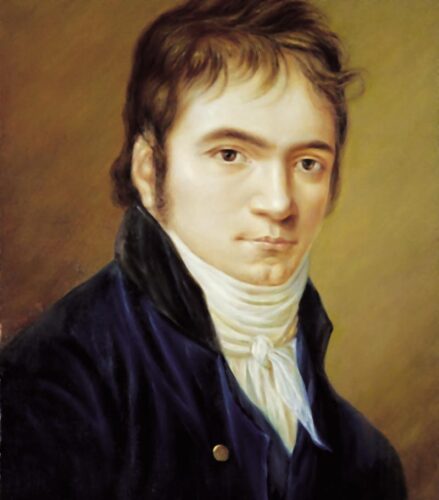
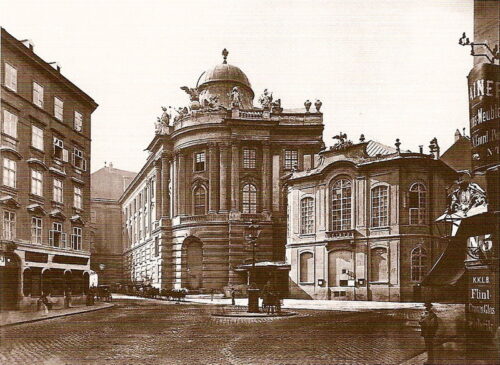
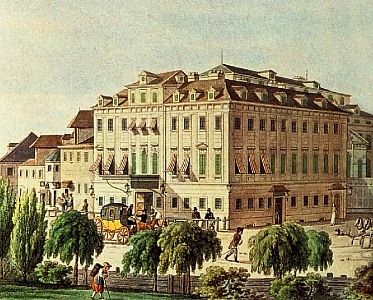
Beethoven’s third symphony was completed in the early 1804. It became a landmark in the history of music, one of the most important musical compositions ever written. The musical wonder had drawn his inspiration from a young French consul (French Consulate was the executive government of the French First Republic) named Napoleon Bonaparte, who according to Beethoven, embodied all the democratic ideals of the French Revolution. He even named his symphony “Buonaparte”. (the name can still be seen in the handwritten manuscript of the symphony (now in the Austrian National Library in Vienna).

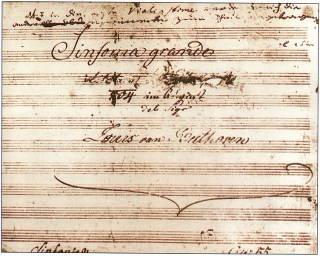
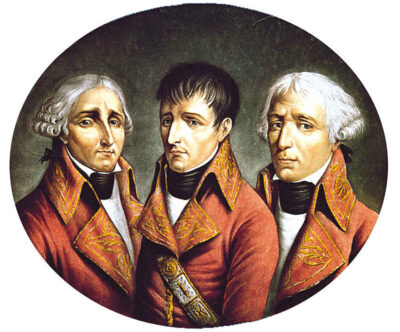
When Napoleon declared himself Emperor of France Beethoven went furious and immediately crossed out the title-dedication of his symphony. That would not however eliminate the tempest Napoleon would bring in Vienna’s doorstep. The already defeated several times in the battlefields Austrians saw the advancing Napoleonic troops, occupying their capital in 1805 for the first time. The fall of Vienna came without the expected military havoc, after the ingenious machination of 3 French marshals who managed to take the city without a fight.

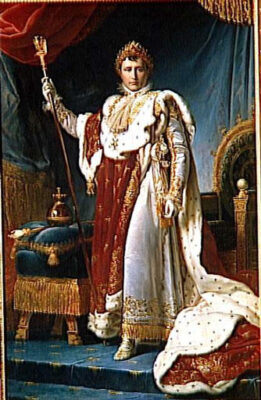
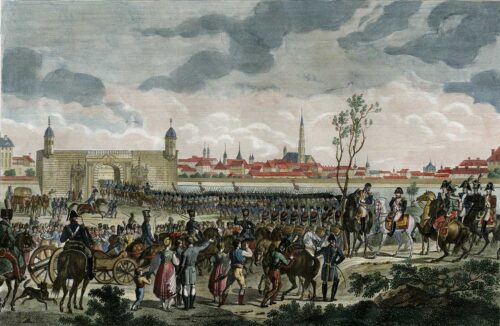
In May 1809 Napoleon was defeated in the Battle of Aspern-Essling, on the outskirts of Vienna for the first time in over a decade by Archduke Charles & the Austrians, with the French losing more than 20.000 men. The Austrians didn’t manage to repeat their triumph two months later in the Battle of Wagram (the largest battle in European history up to that point) which left the way to Vienna wide open for the French.
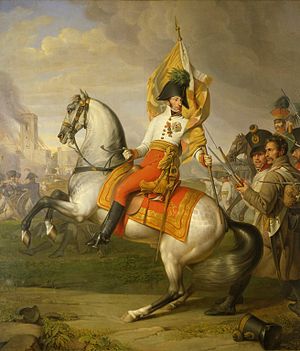
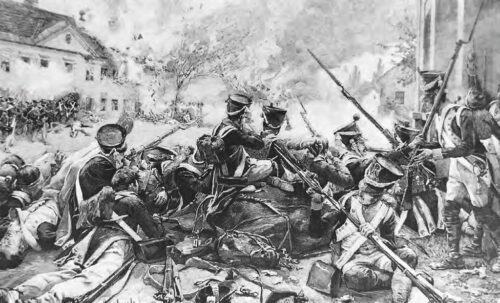
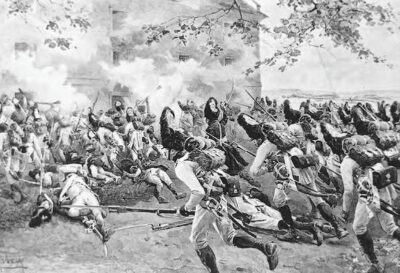
On May 10th 1809, General Oudinot‘s troops entered the suburbs of Vienna. The defenders of Vienna were commanded by Archduke Maximilian, Emperor Francis II‘s brother in law who commanded little more than 35.000 soldiers. Napoleon’s cannons didn’t give many options to the Austrians who had to surrender their capital for a second time in only few years. Napoleon moved in the newly erected Schönbrunn Palace and made it his headquarters. A few days later the supplies of food “owed” by the Austrian population to the French army were precisely determined.
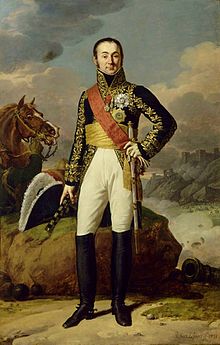

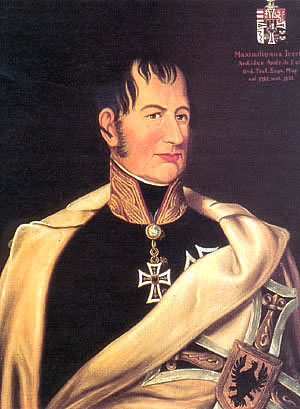
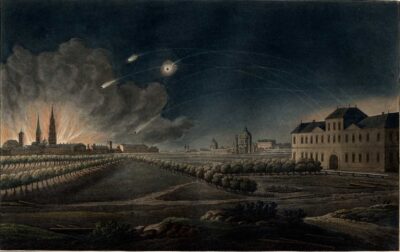
Although the conditions of the second occupation & surrender to the French were extremely harsh and led to the dissolving of the Austrian Empire, the loss of many of its territories & the bankruptcy of the Viennese treasury in 1811, these conditions wouldn’t last for long. Napoleon’s catastrophic invasion of Russia in 1812 & the defeats in a series of following battles led to the redrawing of the European map by the Congress of Vienna. From September 1814 to June 1815, Vienna became the undisputed center of Europe, with Kings, Prime Ministers, ambassadors, politicians and other diplomats from every part of the European continent convening in the countless salons of Vienna in the day while attending a series of balls, parties, musical events in the evening.
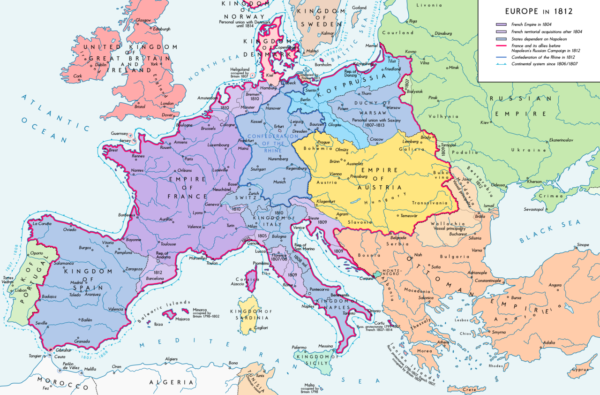
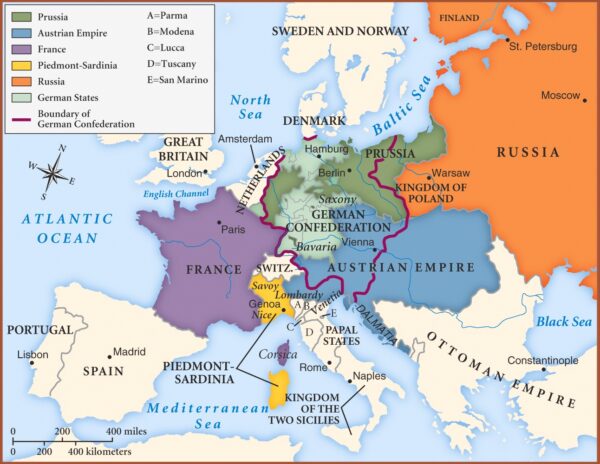
By the end of the Napoleonic Wars Beethoven had completely lost his hearing, a problem he had already started to face from the beginning of his career but deteriorated as the years went by. However he still continued to work and compose until the problem was so intense that he had to be turned in order to see the enthusiastic outburst of applause by the Viennese crowd, in the end of the premiere of his Ninth Symphony. His funeral procession on 29 March 1827 was attended by an estimated 20,000 Viennese citizens. Franz Schubert, who died the following year and was buried next to Beethoven, was one of the torchbearers.
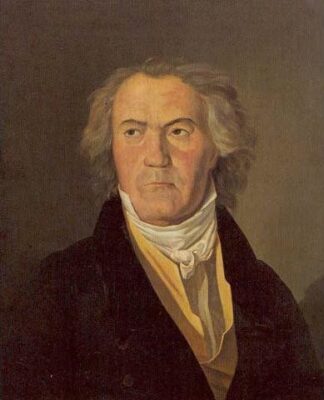
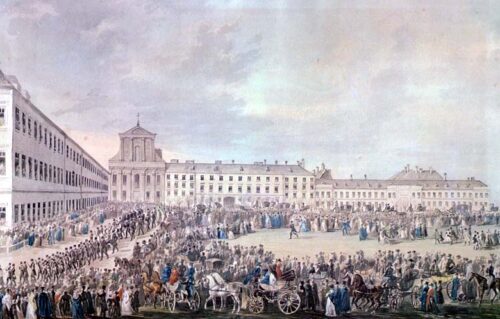

The Austrian Empire entered a period of censorship and suppression of liberties. The police state became known as the Biedermeier and was in essence under the firm grip of the Austrian foreign minister Klemens von Metternich who had already excelled by restoring much of Austria’s greatness in the Congress of Vienna under a redefined Confederation of German states.

